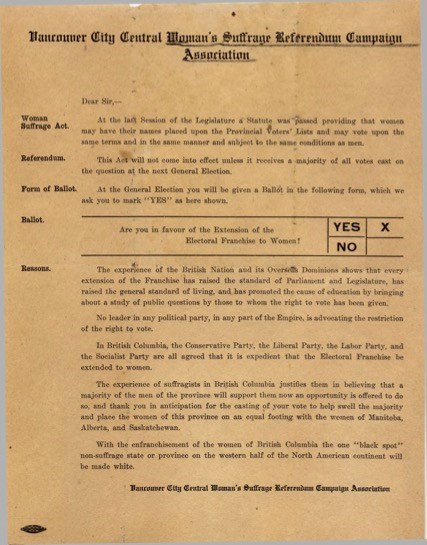In 1916, a pamphlet was issued to encourage men who were voting in the upcoming election to vote yes in the referendum to determine if women should be given the right to vote.
As the pamphlet reads, it was "agreed that it [was] expedient that the Electoral Franchise be extended to women." However, the movement's proponents were only referring to a very specific group of women.
"In the referendum, 65.8% of the men who voted were in favour of enfranchising women," Dr. Mary Chapman, Academic Director, Public Humanities Hub, and Professor of English at the University of British Columbia tells V.I.A.
As a result, "in April 1917, the new Liberal government enacted the Provincial Elections Act Amendment Act to grant any women who qualified as British subjects the right to vote in provincial elections and to be elected to Provincial legislative assembly."
So: Only white women.
Chapman explains that Chinese and Hindu people were not enfranchised in B.C. until 1947, Mennonites and Hutterites followed a year later in 1948, and Indigenous and Japanese people were not enfranchised until 1949. The last group to receive enfranchisement was the Doukhobors in 1952.
This kind of pamphlet was very effective, says Chapman who authored a book that touches on the subject, Making Noise, Making News: Suffrage Print Culture and U.S. Modernism.
"They’d be handed out, possibly by young attractive women in places frequented by men or men and their wives (baseball stadiums, main thoroughfares and shopping areas, theatres, etc.), and would use simple language and illustrations in order to be as persuasive as possible."
To see more of what the City of Vancouver Archives has in its vast collection, check out its website.



